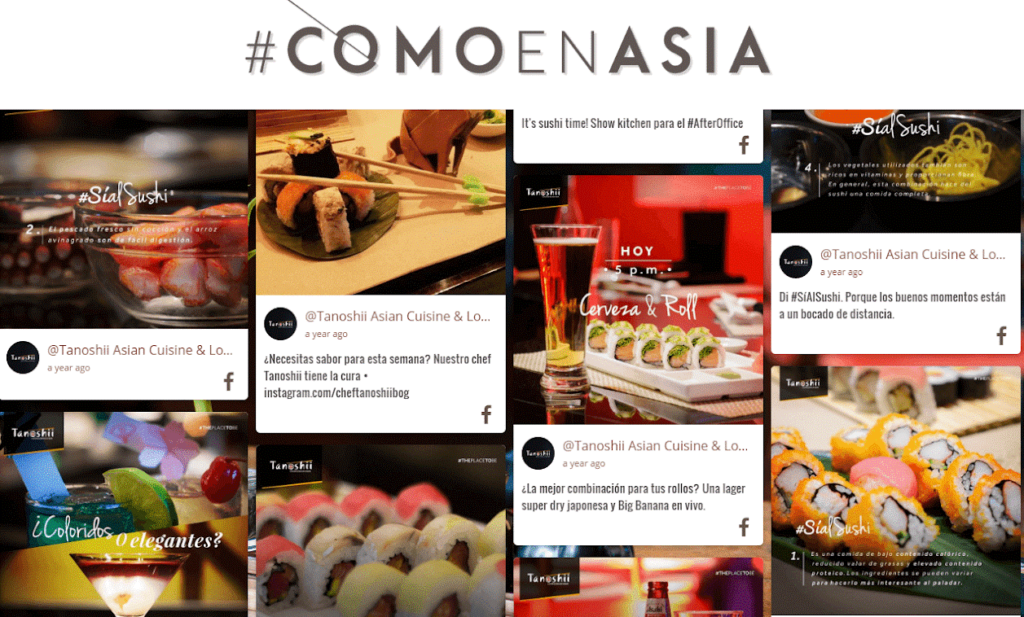With 2.38 million daily active users, Facebook is the oldest and the most popular social media platform to date. What makes Facebook so popular is its ever-evolving nature. However, for a business, it takes a lot to make their Facebook presence visible through regular posts, videos, stories, and images.

It is important for a business to follow a good marketing strategy along with a continuous flow of good content to shine on Facebook. An easy way of making the best use of your Facebook feed and increasing its visibility is by embedding Facebook feed on your website.
Different Ways to Embed Facebook Feed on Website
Embedding Facebook feed has various benefits besides putting Facebook feed to the best use. There are various ways in which Facebook Feed can be embedded on the website. Let’s talk about each of them in detail.
1. Create a Facebook Social Wall
A social wall is a social feed wall that contains images from any or all of the social media platforms in a snippet. These images are aggregated and collected with the help of hashtags, usernames, mentions, and handles. But how is this done? No, you don’t have to individually collect them all. There are tools that do all the tasks for you.
These tools are known as social media aggregators. They collect the raw content from your social media account (Facebook account in this matter), aggregate and convert it into a presentable form through moderation, customization, and with the help of other such features. Once, you are satisfied with the look of the social wall created, generate the embed code and paste it in the backend of your website where you want it to be displayed on your website.
2. Through Facebook’s Embedding Feature
There are certain special comments, mentions, and posts on your Facebook which you want to embed on your website directly. This can easily be done through the Facebook embedding feature.
All you need to do is click on the options menu on the top right corner of the respective post or video and choose ‘embed post’ or ‘embed video’ from the drop-down menu.
Once you have the code, paste it in the backend of the web page you want it to be displayed.
For more information on embedding comments, posts, and videos, you can visit Facebook for Developers.
3. Using Plugin And Widgets
The third and easiest method of embedding Facebook feed on a website is through third-party widgets and plugins. Moreover, Facebook has its social plugins like group plugin for web, quote plugin, and page plugin. To know how you can use these plugins visit Facebook for Developers.
Besides Facebook’s plugins, there are various other free plugins and widgets which can be used for your respective websites. They also come with exclusive features of customization, responsive design, and analytics that make embedding Facebook feed on the website easier.
Benefits of Embedding Facebook Feed
Now that we know how Facebook Feed can be embedded on the website, let’s head to the benefits of doing the same.
1. Maximizes the Brand Reach
The chances of viewing Facebook feed by customers doubles up in number when it is embedded on the website. The integration of social presence and digital presence bridges the gap between the two and enables the easy flow of visitors from here to there and vice versa.
Moreover, embedding the Facebook feed means it can be viewed on the website itself without being redirected to the Facebook app enjoying both the mediums at the same time.
2. Adds To The Social Proof
Embedding Facebook feed creates a social buzz about your brand which makes visitors and customers trust you better. The UGC content when displayed on your website adds to the authenticity and reliability of your brand. They act as a form of testimonials for your business too.
This all further helps in turning your visitors into your customers. Also, they can make better buying decisions after watching the Facebook feed.
3. Interactive and Engaging
Embedding Facebook feed on a website makes the website engaging as well as interactive. Visitors stay at your site longer than required as they get engaged with the UGC feed displayed on a Facebook social wall.
This further has a positive effect on the SEO like an increase in conversion rates, increase in dwelling rate, and diminishing bounce rates making the website appear high in the search rankings.
4. Real-Time Updates
Embedding Facebook feed on the website through social media aggregators enables you to add the stream of live continuous feed on the website. It works in real-time and is beneficial for announcing upcoming offers, promotions, and discounts. With the help of such tools, such posts can be highlighted so that they are easily visible to catch the attention of website visitors.
That was all about embedding Facebook feed on the website and the benefits associated with it.
